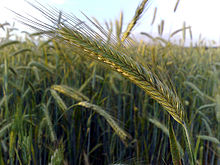I. Rye Cultivation and History:
– Rye is a wild cereal that originated in the Levant and spread to central and eastern Turkey.
– Evidence shows rye was among the first cultivated cereal crops over 13,000 years ago.
– Domesticated rye appeared in small quantities in Neolithic sites in Asia Minor.
– Rye cultivation in central Europe began around 1800-1500 BCE.
– Rye grows well in various soil types, including heavy clay, light sandy soil, and infertile or drought-affected soils.
– Rye has been cultivated widely in Central and Eastern Europe since the Middle Ages.
– It thrives in poorer soils compared to other cereal grains.
– Rye plants can withstand cold weather better than other grains.
– Autumn-planted rye grows vigorously and suppresses weed competition.
II. Rye Ecology and Management:
– Rye pests include nematodes, leaf beetles, fruit flies, and more.
– Insects like the Hessian fly and rustic shoulder knot can seriously affect rye plants.
– Management strategies are essential to control pest infestations.
– Rye is highly susceptible to the ergot fungus, which can lead to serious health issues.
– Modern grain-cleaning methods have reduced the prevalence of ergot in rye.
– Rye can invade winter wheat fields, impacting crop quality and productivity.
– Effective management practices are crucial to prevent rye invasions.
– Maintaining a healthy ecosystem is essential for successful rye cultivation.
III. Rye Production and Consumption:
– Rye production statistics show fluctuations in countries like Russia, Poland, Belarus, China, and Germany.
– Total rye exports were valued at $186M in 2016.
– Poland has the highest per capita rye consumption at 32.4kg, with EU countries consuming around 5.6kg per capita.
– Nordic and Baltic countries also have high rye consumption levels.
– Global per capita rye consumption is relatively low at 0.9kg.
– Rye flour has lower gluten content than wheat flour, making it popular for various food products.
– Rye bread, crisp bread, alcoholic drinks, and livestock bedding are common uses of rye.
IV. Rye Genetics and Genomics:
– Triticale, a hybrid of rye and wheat, has faced initial challenges but is increasingly produced globally.
– Rye plays a role in transferring resistance genes to wheat pathogens and pests.
– Studies on the rye genome, whole-genome sequencing, and genetic characteristics are ongoing.
– Rye’s genetic properties have implications for wheat-rye interactions and hybridization.
– Triticale cultivation spans millions of acres/hectares, showcasing its importance in agriculture.
V. Ergot and Health Aspects of Rye:
– Ergotism, caused by consuming ergot-infected rye, poses health risks.
– Ergot fungus and stem rust are diseases affecting rye cultivation.
– Rye provides essential nutrients like protein, dietary fiber, B vitamins, and minerals.
– Rye beta-glucan can lower blood cholesterol levels and improve blood sugar regulation.
– Studies highlight the benefits of whole grains like rye in reducing heart disease risk and supporting overall health.
Rye (Secale cereale) is a grass grown extensively as a grain, a cover crop and a forage crop. It is a member of the wheat tribe (Triticeae) and is closely related to both wheat and barley (genera Triticum and Hordeum). Rye grain is used for flour, bread, beer, crispbread, some whiskeys, some vodkas, and animal fodder. It can also be eaten whole, either as boiled rye berries or by being rolled, similar to rolled oats.
| Rye | |
|---|---|

| |
| Scientific classification | |
| Kingdom: | Plantae |
| Clade: | Tracheophytes |
| Clade: | Angiosperms |
| Clade: | Monocots |
| Clade: | Commelinids |
| Order: | Poales |
| Family: | Poaceae |
| Subfamily: | Pooideae |
| Genus: | Secale |
| Species: | S. cereale
|
| Binomial name | |
| Secale cereale | |
| Synonyms | |
|
Secale fragile M.Bieb. | |
Rye is a cereal grain and should not be confused with unrelated ryegrass (Lolium), which is used for lawns, pasture, and as hay for livestock.
